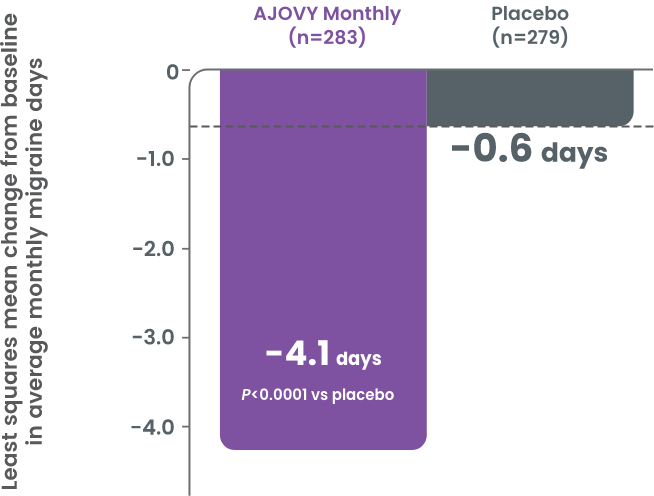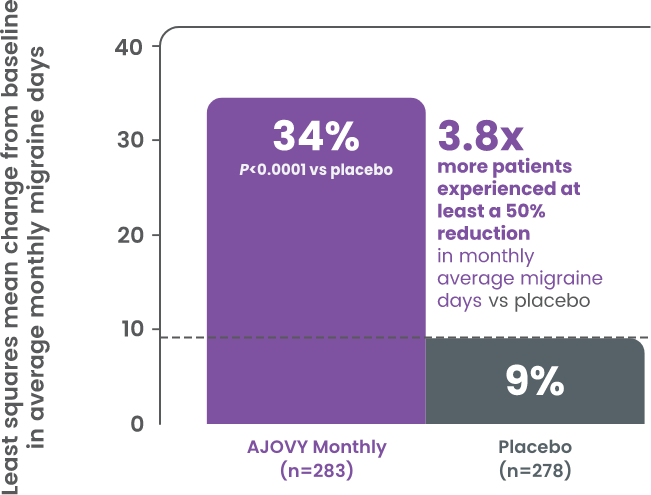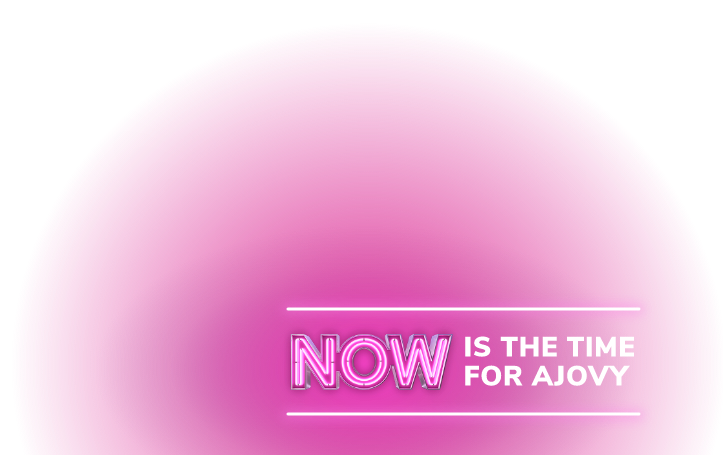Contraindications: AJOVY® is contraindicated in patients with serious hypersensitivity to fremanezumab-vfrm or to any of the excipients. Reactions have included anaphylaxis and angioedema.
Hypersensitivity Reactions: Hypersensitivity reactions, including rash, pruritus, drug hypersensitivity, and urticaria were reported with AJOVY in clinical trials. Most reactions were mild to moderate, but some led to discontinuation or required corticosteroid treatment. Most reactions were reported from within hours to one month after administration. Cases of anaphylaxis and angioedema have been reported in the postmarketing setting. If a hypersensitivity reaction occurs, consider discontinuing AJOVY and institute appropriate therapy.
Hypertension: Development of hypertension and worsening of pre-existing hypertension have been reported following the use of CGRP antagonists, including AJOVY, in the postmarketing setting.
Monitor patients treated with AJOVY for new-onset hypertension or worsening of pre-existing hypertension, and consider whether discontinuation of AJOVY is warranted.
Raynaud’s Phenomenon: Development of Raynaud’s phenomenon and recurrence or worsening of pre-existing Raynaud’s phenomenon have been reported in the postmarketing setting following the use of CGRP antagonists, including AJOVY. Many of the cases reported serious outcomes, including hospitalizations and disability, generally related to debilitating pain.
AJOVY should be discontinued if signs or symptoms of Raynaud’s phenomenon develop. Patients with a history of Raynaud’s phenomenon should be monitored for, and informed about the possibility of, worsening or recurrence of signs and symptoms.
Adverse Reactions: The most common adverse reactions in clinical trials (≥5% and greater than placebo) were injection site reactions.
AJOVY is indicated for:
- The preventive treatment of migraine in adults, and
- The preventive treatment of episodic migraine in pediatric patients who are 6 to 17 years of age and who weigh 45 kg or more.
Please see the full Prescribing Information.


